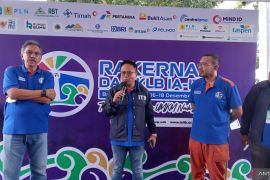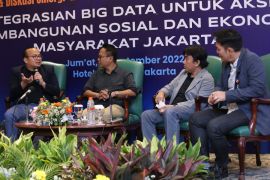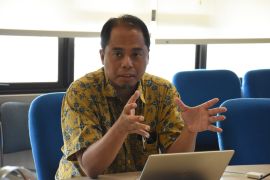One of their findings was that the two faults are active ones, said Irwan Meilano, a researcher from the Earth Science Faculty of the Bandung Institute of Technology (ITB) who took part in the Indonesia-Japan "Multidisciplinary Hazard Reduction from Earthquakes and Volcanoes in Indonesia" research cooperation project.
"We can say the faults are active because we found that four to six millimeter frictions occur in the Cimandiri fault and two to four millimeter frictions happen in the Lembang fault every year," he said here at a disaster management workshop on Friday.
Irwan said the pattern of its seismic activity showed the possibility that the Cimandiri fault was moving towards the sea although more accurate data needed to be collected.
The Cimandiri fault was located on straight line stretching from the south of Cianjur to the south of Sukabumi while the Lembang fault extended on line under the surface of four subdistricts until Mount Manglayang in Bandung district.
"The research is still ongoing. We hope to get more conclusive results in the next few years," Irwan said.
Meanwhile, a researcher from the Center of Geotechnology Research of the Indonesian Institute of Sciences (LIPI) Eko Yulianto, said he had found evidence that 2000 years ago the Lembang fault had moved causing a 6.8 earthquake.
"Then about 500 years ago, a 6.6 magnitude earthquake happened," Eko said
Eko said several minor earthquakes caused by the Lembang fault had happened in the period between the two major temblors.
Based on the results of studies on the two major earthquakes, Eko said, the speed of the fault`s frictions was as reported by fellow researcher Irwan Meilano.
"We, of course, need more data to know any repetition accurately," Eko said.
Eko said because major quakes had happened in the past, there would be similar phenomena in the future although the exact time they would happen was unpredictable.
Project Director of LIPI and Japan International Cooperation Agency (JICA) Hery Harjono also said it was difficult to know beforehand when an earthquake would happen.
Hery said scientists could only foresee where an earthquake would occur and its approximate magnitude.
The Indonesia-Japan research project was supported by Indonesia`s Research and Technology Ministry, the Indonesian Institute of Sciences, the Japan International Cooperation Agency (JICA), and Japan Science and Technology (JST).
(Uu.SDP-16/HAJM/S012)
Editor: Priyambodo RH
Copyright © ANTARA 2011











